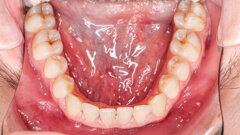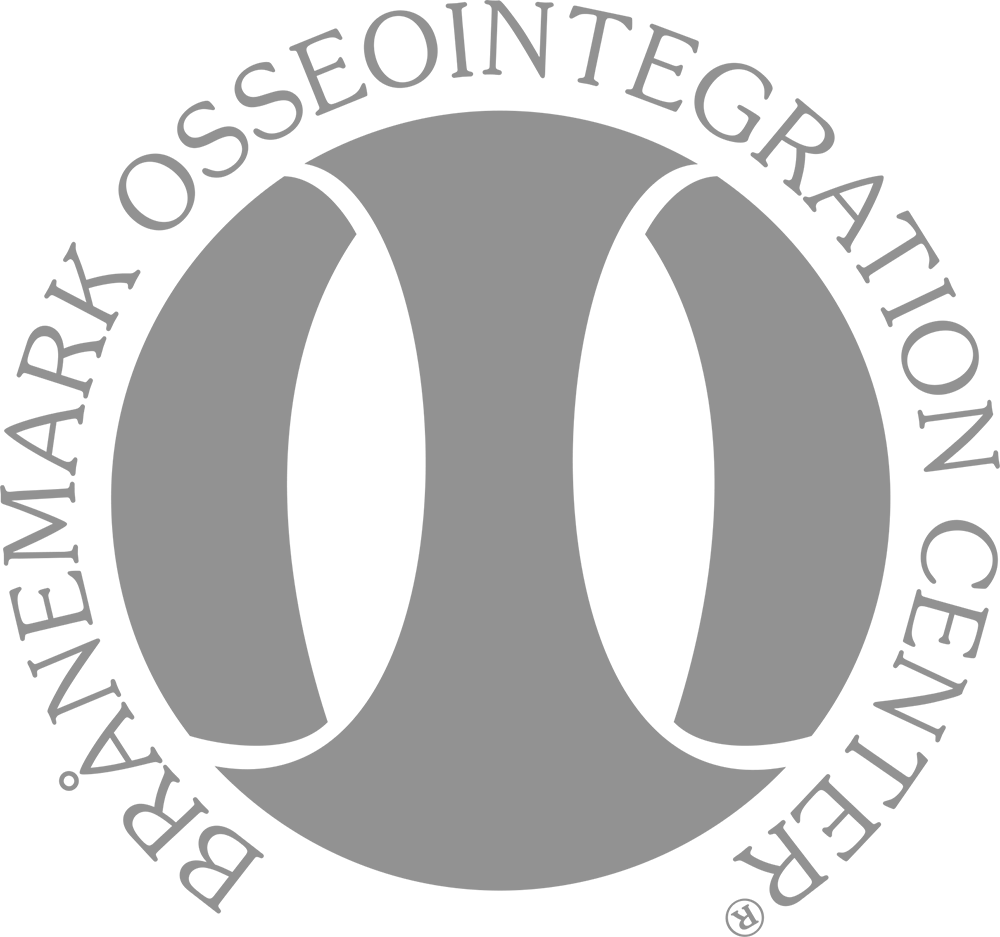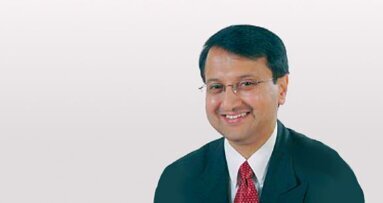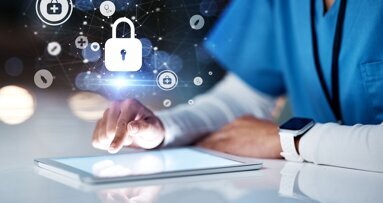Recently, Dr John O’Keefe, the editor of the Journal of the Canadian Dental Association, interviewed Dr Titus Schleyer, associate professor and director of the Center for Dental Informatics, University of Pittsburgh, about the development of health information technology in the context of the dental profession.
Dr O’Keefe: What are the main developments you see in the areas of informatics and information technology (IT) as applied to dental practice?
Dr Schleyer: We have gone through a tumultuous period of change and development in informatics and information technology over the last 15 to 20 years, so I think many of these trends will continue to roll on. For instance, the way the Internet has influenced dental practice and life in general. I think we have seen changes that we could barely imagine 20 years ago.
The trends in how we use electronic technology in our lives and in managing information have emerged with the stark reality, and I guess they will continue to mature and generate new surprises. In terms of concrete examples, we see that data and information are much more accessible and available than previously, and they are much better connected. We see patients having access to their medical records, looking at what physicians write about them and what they diagnose, and sometimes arguing about it, and thus taking a much more active role in their care. I think that is a development that will definitely influence dentistry.
We have almost ubiquitous information access. There are dentists who access their practice schedules through their Blackberrys, cell phones and other devices. Some physicians write prescriptions from their hand-held computers. So I think ubiquitous information access will be a strong trend in the future.
Another big development I see accelerating is the move towards paperless practices, paperless being somewhat of a euphemism for “mostly computerized practices.” Paper never really goes away, even in the most highly computerized settings. Our research has shown that we seem to be standing at the beginning of a rapid acceleration of computerization of dental practice with respect to pretty much everything: patient records, supply ordering, electronic communication with patients, and so on. Based on historical trends, we expect that there’ll be a rapid acceleration of dentists who will adopt these technologies in the future. You can either sit on the fence or jump off. I think times are right for more people to take the leap and jump into the fray of computer-based patient records in their practice.
What do you think are the main implications of the electronic patient record, and is there a difference between that and the electronic health record?
Typically, people consider the electronic health record as something global that has everything related to a patient’s health in it. An electronic patient record is often used in specific reference to a health care area, for instance, as in an “electronic medical record” and an “electronic dental record.” I prefer the term, “electronic dental record,” for us because that identifies the dental component of the patient’s health. In general, the impact of electronic health records will be very significant.
As you know, the U.S. is targeting 2014 as the year when most Americans are supposed to have access to electronic health records. This now has been the stated goal of two successive presidents from different political parties, no less. Through this national goal and mandate, so to speak, we will come to a much more transparent way of managing patient information.
As I mentioned earlier, patients now do take a look at their own health record and sometimes argue with the physicians about what’s in them. They detect errors that are in pretty much every patient record, and I think that will have a big impact. I think we will move away from patient records as incidental documents that we mainly create in order to protect ourselves from lawsuits. In the future, they will be a central tool that informs and guides how we care for patients.
When you look at how the United States conceptualizes electronic patient records, we’re not pursuing that concept as a goal in of itself. The idea is to fundamentally improve patient care, as several reports from the Office of the National Coordinator for Health Information Technology have described. How do we do this? Number one, you give caregivers who need access to patient information the ability to access it. Number two, you connect personal health information with evidence-based resources in order to make sure that patients get the most appropriate care. And third, as I mentioned, you get the patients involved in their own health care through electronic access to their data.
So I think dentistry is a little bit behind here, but that is not necessarily a bad thing. However, we shouldn’t wait until a wave of patients washes over us when people march into our offices and demand the same kind of access to dental records that they have to their medical records.
Do you think that the patients having access to an electronic health record would have any impact on the relationship of a particular patient with a particular provider? Would it make patients more mobile?
In theory, patients’ mobility will be enhanced by easy access to their health information. But of course, we have to temper that view by asking whether, and to what degree, the difficulty and effort in obtaining records influences a patient’s decision to move to another dentist right now. Typically, if people are unhappy with their dentist, they’ll “pack up and go” to a new dentist. Maybe that will be slightly easier for them if they do not have to worry about getting their radiographs or particular pieces of their patient record to their new dentist. But I’ve never really felt that patients I talked to who switched dentists were particularly inhibited by the fact that they had to get a copy of the latest radiographs, for instance. So in the grand scheme of things, I think there will be only a minor effect.
You might think this is a leading question but, could it make it easier for a patient to be seen independently by a dentist and an independent hygienist?
I guess it could if the independent hygienist had access to the full record and would have less work in doing the work-up and all the data collection. It would probably make that easier, but I think one thing to think about is that this capability could enhance overall efficiency of our dental care system. Right now, we spend a lot of time duplicating information that’s already somewhere else in the system. Also, I think with this more transparent access, we’ll focus on hopefully more important things and we’ll start from information that’s already there. We might update it, we might verify it, but we don’t have to spend 25 minutes going through the whole health history again from scratch.
When you look out five to 10 years, what are practical applications of the trends you see now for the dental office of the future?
Well, we’ve discussed the impact of informatics and IT a little bit in terms of what it means for patients and practitioners already. I’m hoping to see the day when computers can contribute to helping practitioners keep up-to-date more than that is currently the case. Currently, computers don’t help much, in my opinion, because you as the practitioner have to do all the work. In order to update yourself on a topic or look up a clinical question, you have to sit down at a computer, you have to search Medline or Google, or you fire off a message to an Internet discussion list. I’m looking for computers to do more of this for us. For instance, you could tell the computer the topic you are interested in, and it would retrieve and sift information for you. This form of information retrieval is not that hard computationally.
What is hard is that we have to separate the chaff from the wheat. We have to separate valid from invalid information. And, that’s a job that humans and dentists are very well qualified for, but I think a lot of the grunt work should be done by computers and there’s no reason why we can’t make them do that. Also, for dental offices, it means that the sophistication with which people look at the computer infrastructure has to rise significantly. One thing that we have to acknowledge is that dentists are the “chief information officers” for their businesses. They are in charge of managing all information technology, whether they do it themselves or outsource it. But most dentists don’t have that much training in that and the number of dental schools who provide that training is relatively small.
Contact Titus Schleyer, DMD, PhD, at titus@pitt.edu or visit www.di.dental.pitt.edu.
Dear ADDE members and supporters,
With Christmas around the corner, we can say that 2016 was a good business year for the dental industry and the ...
LONDON, UK: UKDentalCourses (UKDC) is excited to announce that it will be hosting the Digital Dentistry Conference and Exhibition on Saturday, 9 July 2022, ...
Dr. Rhonda Kalasho has recently been acclaimed as the most detail-oriented dentist in Hollywood. She works at one of the most innovative dental practices in...
LONDON, England: “The future of aligner orthodontics”—the theme for the sixth congress of the European Aligner Society (EAS)—sets the stage for ...
LONDON, UK: In the dental clinic setting, communication is key to both successful results and satisfaction. At a recent exhibition, titled “Heads up! ...
WASHINGTON, US: Covering everything, including composite fillings and disposable suction tips, plastics are woven into all aspects of modern dental care. ...
Aesthetic aspects do increasingly play an important part in clincical outcomes. In this second part of our exclusive commentary series, Dr Sushil Korailal ...
Dr Purnima Kumar is William K. and Mary Anne Najjar endowed professor of dentistry and chair of the Department of Periodontics and Oral Medicine at the ...
Since 2017, Dr Fabia Flensberg has worked as a dentist at Dentalzentrum Essen in the Elizabeth Hospital Essen in Germany. Her work focuses on aesthetic ...
Dentists dedicate immense effort to building thriving practices, adopting advanced technologies and improving workflows, towards enhancing patient care. ...
Live webinar
Mon. 12 January 2026
9:00 am EST (New York)
Prof. Judith Jones D.D.S; M.P.H., Prof. Kakuhiro Fukai D.D.S., Ph.D, Dr. Bathsheba (Bethy) Turton
Live webinar
Wed. 14 January 2026
12:00 pm EST (New York)
Dr. Théo Laplane, Dr. Robert Gottlander DDS
Live webinar
Fri. 16 January 2026
12:00 pm EST (New York)
Live webinar
Mon. 19 January 2026
1:00 pm EST (New York)
Philipp Kopp, Michael Seeber
Live webinar
Thu. 22 January 2026
2:00 pm EST (New York)
Dr. Nicola M. Grande DDS, PhD
Live webinar
Wed. 28 January 2026
8:00 am EST (New York)
Live webinar
Wed. 28 January 2026
11:00 am EST (New York)
Prof. Dr. Jan-Frederik Güth



 Austria / Österreich
Austria / Österreich
 Bosnia and Herzegovina / Босна и Херцеговина
Bosnia and Herzegovina / Босна и Херцеговина
 Bulgaria / България
Bulgaria / България
 Croatia / Hrvatska
Croatia / Hrvatska
 Czech Republic & Slovakia / Česká republika & Slovensko
Czech Republic & Slovakia / Česká republika & Slovensko
 France / France
France / France
 Germany / Deutschland
Germany / Deutschland
 Greece / ΕΛΛΑΔΑ
Greece / ΕΛΛΑΔΑ
 Hungary / Hungary
Hungary / Hungary
 Italy / Italia
Italy / Italia
 Netherlands / Nederland
Netherlands / Nederland
 Nordic / Nordic
Nordic / Nordic
 Poland / Polska
Poland / Polska
 Portugal / Portugal
Portugal / Portugal
 Romania & Moldova / România & Moldova
Romania & Moldova / România & Moldova
 Slovenia / Slovenija
Slovenia / Slovenija
 Serbia & Montenegro / Србија и Црна Гора
Serbia & Montenegro / Србија и Црна Гора
 Spain / España
Spain / España
 Switzerland / Schweiz
Switzerland / Schweiz
 Turkey / Türkiye
Turkey / Türkiye
 UK & Ireland / UK & Ireland
UK & Ireland / UK & Ireland
 Brazil / Brasil
Brazil / Brasil
 Canada / Canada
Canada / Canada
 Latin America / Latinoamérica
Latin America / Latinoamérica
 USA / USA
USA / USA
 China / 中国
China / 中国
 India / भारत गणराज्य
India / भारत गणराज्य
 Pakistan / Pākistān
Pakistan / Pākistān
 Vietnam / Việt Nam
Vietnam / Việt Nam
 ASEAN / ASEAN
ASEAN / ASEAN
 Israel / מְדִינַת יִשְׂרָאֵל
Israel / מְדִינַת יִשְׂרָאֵל
 Algeria, Morocco & Tunisia / الجزائر والمغرب وتونس
Algeria, Morocco & Tunisia / الجزائر والمغرب وتونس
 Middle East / Middle East
Middle East / Middle East
















































To post a reply please login or register